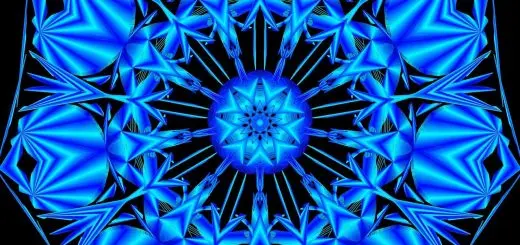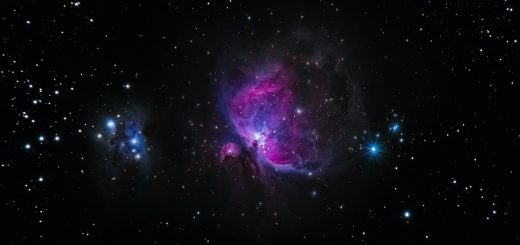Dumuzid: Shepherd God and Husband of Inanna

Looking for more amazing products? Check out our online store and explore our collection here! Happy shopping!
Before diving in, please note: This post is for informational purposes only. If you’d like to know more about how we approach topics, feel free to check out our friendly Disclaimer Page.
Hey there, amazing readers! 
We’re committed to delivering quality posts, and your support (even just sticking around despite the ads) means everything to us. So, bear with us, and thanks for helping us keep the good vibes rolling. Now, on to the fun stuff!
TRANSLATE BUTTON AT THE END OF THE ARTICLE
Overview
Dumuzid, known as the shepherd god and husband of Inanna, is a prominent figure in ancient Mesopotamian mythology.
This article explores the origins, mythological significance, roles, depictions, and symbolism surrounding Dumuzid.
It also delves into the myth of Dumuzid and Inanna, his association with the cycle of life and death, worship and rituals dedicated to him, his influence on Mesopotamian culture, comparisons to other deities in different cultures, and his legacy in modern times.
Dumuzid: Shepherd God and Husband of Inanna
Dumuzid, also known as Tammuz, was an important Mesopotamian deity associated with shepherds, agriculture, and fertility.
He was regarded as the husband of Inanna, the goddess of love, fertility, and war.
Dumuzid’s significance lies in his role as a symbol of vitality and abundance in the natural world.
As a shepherd god, he was responsible for ensuring the well-being of flocks and the success of agricultural endeavors.
Origins and Mythological Significance
The origins of Dumuzid can be traced back to ancient Sumer, one of the earliest urban civilizations in Mesopotamia.
His worship was prevalent throughout the region, with evidence of his cult found in ancient texts, hymns, and artwork.
Dumuzid’s mythological significance lies in his association with the cycles of life and death, mirroring the agricultural seasons and the natural world’s perpetual renewal.
Dumuzid’s Role in Sumerian Religion
In Sumerian religion, Dumuzid played a vital role as an intermediary between humans and the divine.
He was often depicted as a shepherd-king who ruled over the land during the growing season.
It was believed that his favor and blessings were necessary for the prosperity of the community.
Dumuzid was also associated with the underworld, where he spent half of the year, representing the death and rebirth of nature.
Depictions and Attributes of Dumuzid
Dumuzid was commonly depicted as a young and handsome figure, adorned with long hair and a shepherd’s staff.
He was often portrayed wearing a horned crown or headdress, symbolizing his divine status.
Additionally, he was sometimes depicted with a sacred tree, representing the abundance of nature that he brought.
Dumuzid’s attributes of beauty, vitality, and fertility were emphasized in artistic representations to convey his role as a life-bringer.
The Myth of Dumuzid and Inanna
One of the most well-known myths associated with Dumuzid is the tale of his marriage to the goddess Inanna.
According to the myth, Inanna descended into the underworld, leaving Dumuzid in charge of the earthly realm.
However, when Inanna returned, she found that Dumuzid had not mourned her absence, leading her to condemn him to the underworld.
This myth symbolizes the cyclical nature of life and death, as Dumuzid alternates between the realm of the living and the realm of the dead.
Symbolism and Themes in Dumuzid’s Myth
The myth of Dumuzid and Inanna holds various symbolic meanings and themes.
It represents the changing of the seasons, where Dumuzid’s descent into the underworld corresponds to the barrenness of winter, while his return symbolizes the rejuvenation of nature in spring.
The myth also explores themes of love, devotion, and sacrifice, as Dumuzid’s loyalty to Inanna is tested through his time in the underworld.
Dumuzid and the Cycle of Life and Death
Dumuzid’s association with the cycle of life and death is deeply intertwined with his role as a shepherd god.
His annual journey to the underworld and subsequent return symbolizes the cyclical nature of the seasons and the perpetual renewal of life.
The story of Dumuzid’s descent and resurrection served as a metaphor for the agricultural cycles, where the death of crops in winter would be followed by their rebirth in spring.
Worship and Rituals Associated with Dumuzid
Worship of Dumuzid involved various rituals and ceremonies dedicated to ensuring the fertility of the land and the well-being of the community.
These rituals often included offerings of food and drink, music and dance performances, and processions in honor of the deity.
In some regions, sacred marriage rites were performed, symbolizing the union between Dumuzid and Inanna, and the promise of fertility and abundance.
Dumuzid’s Influence on Mesopotamian Culture
Dumuzid’s influence on Mesopotamian culture extended beyond religious beliefs and practices.
He played a significant role in the arts, literature, and music of the region.
His mythological tales were celebrated in epic poems and hymns, while his image adorned pottery, seals, and other forms of artwork.
Dumuzid’s association with fertility and abundance also influenced agricultural practices, as farmers sought his blessings for successful harvests.
Comparisons to Similar Deities in Other Cultures
Similar deities to Dumuzid can be found in various ancient cultures.
In Greek mythology, the god Adonis shares similarities with Dumuzid, both being associated with fertility and vegetation.
Additionally, the Egyptian god Osiris and the Phrygian god Attis share common themes with Dumuzid, as they all represent the cycle of life and death, with their stories featuring a descent into the underworld and subsequent resurrection.
Legacy and Impact of Dumuzid’s Mythology
Dumuzid’s mythology left a lasting impact on Mesopotamian civilization.
His tales, rituals, and symbols were passed down through generations, shaping the cultural and religious practices of the region.
Additionally, his association with fertility and abundance fostered a sense of well-being and prosperity among the people.
The myth of Dumuzid and Inanna continues to be studied and appreciated by scholars today, offering insights into the ancient Mesopotamian worldview.
Rediscovering Dumuzid in Modern Times
In recent years, there has been a renewed interest in the mythology of Dumuzid and its relevance in the modern world.
Scholars and enthusiasts alike seek to understand the symbolic meanings and themes embedded in his tales.
Dumuzid’s portrayal as a shepherd god and his connection to the cycles of life and death resonate with contemporary discussions on environmentalism, sustainability, and the interconnectedness of all living beings.
Conclusion
Dumuzid, the shepherd god and husband of Inanna, holds a significant place in ancient Mesopotamian mythology.
His role as a symbol of vitality, fertility, and abundance influenced religious practices, artistic representations, and agricultural traditions.
The myth of Dumuzid and Inanna provided insights into the cyclical nature of life and death, echoing the changing seasons and the perpetual renewal of nature.
Today, Dumuzid’s mythology continues to be appreciated and studied, offering valuable perspectives on the ancient beliefs and cultures of Mesopotamia.

The Enlightenment Journey is a remarkable collection of writings authored by a distinguished group of experts in the fields of spirituality, new age, and esoteric knowledge.
This anthology features a diverse assembly of well-experienced authors who bring their profound insights and credible perspectives to the forefront.
Each contributor possesses a wealth of knowledge and wisdom, making them authorities in their respective domains.
Together, they offer readers a transformative journey into the realms of spiritual growth, self-discovery, and esoteric enlightenment.
The Enlightenment Journey is a testament to the collective expertise of these luminaries, providing readers with a rich tapestry of ideas and information to illuminate their spiritual path.
Our Diverse Expertise
While our primary focus is on spirituality and esotericism, we are equally passionate about exploring a wide range of other topics and niches 

To ensure we provide the most accurate and valuable insights, we collaborate with trusted experts in their respective domains 
Our blog originally focused on spirituality and metaphysics, but we’ve since expanded to cover a wide range of niches. Don’t worry—we continue to publish a lot of articles on spirituality! Frequently visit our blog to explore our diverse content and stay tuned for more insightful reads.
Hey there, amazing reader! 
Check out our store here and take a peek at some of our featured products below! Thanks for being awesome!













